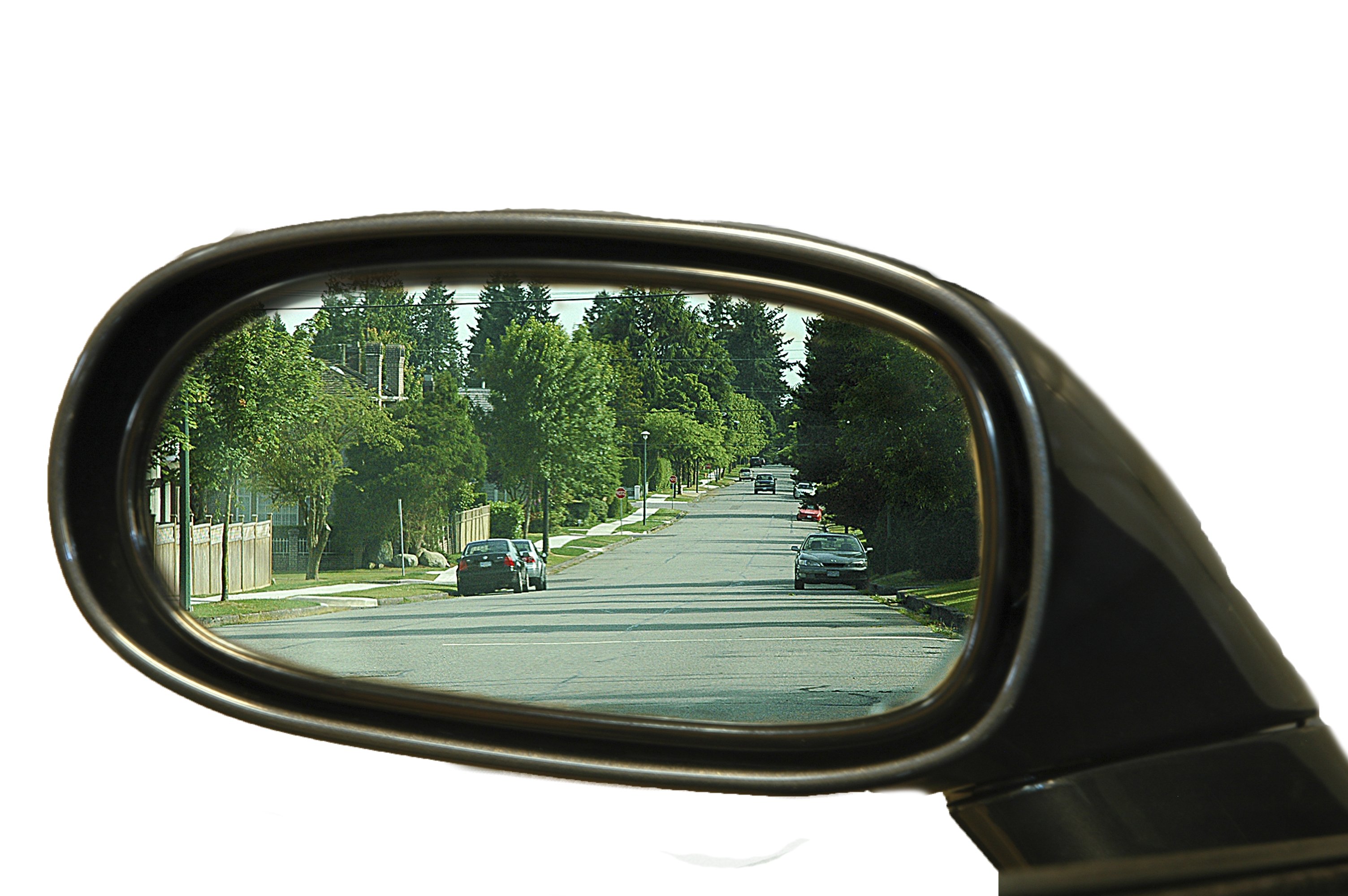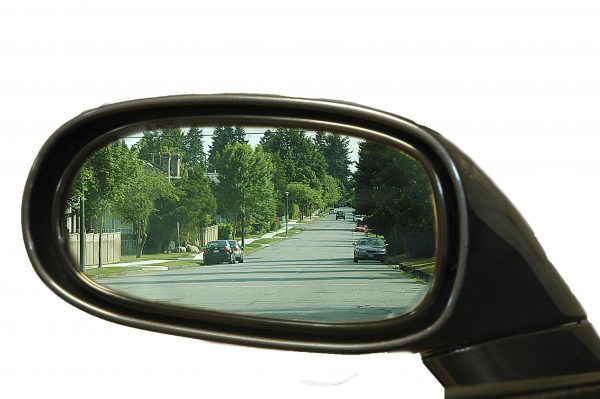Q: What is the proper mirror adjustment for side mirrors? I usually adjust it so I can just barely see the side of my car. How big of a blind spot does this cause? I have seen several places online say that you should push the mirrors out further than this to eliminate blind spots. Which is the best side mirror adjustment?
If you don’t know how big your blind spot is you should sit in your car and get someone to walk around it in an entire circle and watch the mirrors to see when they disappear.
There has been a lot of debate about this over the years and in my opinion I really don’t think there’s a right or wrong or yes or no answer, keep in mind when you go for your ICBC road test Class 5/7 the examiner is going to expect you to shoulder check regardless of what you’ve done with your mirrors – so what does that imply?!
I have seen the information on positioning your mirrors farther out so that you can ‘reduce or eliminate’ the blind spot apparently, but I couldn’t get used to having them that far out. I found that when I went into a parking lot and tried to reverse in or out of a space I had no idea if I was going to hit stuff because my mirrors were so far out and I had no idea where the back of my car was in relation to the car beside it. Ok I had an idea, but I couldn’t actually SEE it. And this would be fine if you have a fancy car that automatically adjusts the mirrors for you but if it doesn’t? Then you have to adjust your mirrors manually every single time you park your car? And that just seems obnoxious to me. I’d rather do a very short and quick shoulder check before my lane changes etc.
Personally when I’m driving a car I have them set up something that looks like this. Usually I am not looking at any of my own car whatsoever, or maybe just a tiny bit of it. There really is no need to stare at your own car since you will not run into yourself, will you? But how far you tilt it out after that is up to you.

This globe and mail article talks about the alternate ways to set the mirrors, but at the very end of the article says that the AMA (Alberta Motor Association) and the CAA both still recommend good old fashion shoulder checks – Hmmm!
Read here what a Young Drivers instructor thinks about this.
I think that as long as you keep track of what’s going on around you all the time when driving (by using all of your mirrors) and you know how to shoulder check correctly then there is nothing wrong with setting up your mirrors this ‘normal’ way. New drivers sometimes are guilty of the ‘extended shoulder check’ where they are actually looking over their shoulder for a long time while driving down the road, and that is an entirely different issue (and very dangerous).
Whatever method you use just make sure you are confident in its ability to prevent a collision, since that is what this is all about.
The days are getting longer and summer is approaching, but it still gets dark sometimes! Are you being blinded by the lights of the vehicle behind you or are you using your night position? A lot of cars have an automatic rear-view mirror dimming feature, but if yours is a simple car then it may not. Almost all cars should have a tab on the bottom of the rear-view mirror to flip to the night position. You will still be able to see the same stuff, but you won’t be as blind.
This is especially helpful if there’s a larger vehicle behind you or one with very bright lights, but it may be good whenever you want to focus on any dark environment ahead of you.

Question:
In BC or Canada in general is it legal to drive without passenger side mirror?
Good question. I took a look at the motor vehicle act and found this:
Mirrors
7.04(1) Subject to subsections (3) and (4), every motor vehicle shall be equipped with an inside mirror that provides the driver with an undistorted reflected view of the highway directly to the rear of the vehicle extending to the horizon from a point on the road surface not more than 61 m behind the vehicle.
(2) In addition to the requirements of subsections (1) and (3), every motor vehicle manufactured after January 1, 1973 shall be equipped with an outside mirror on the driver’s side that provides the driver with an undistorted reflected view of the adjacent lane of the highway rearward to the horizon from a point on the road surface 11 m behind the driver.
(3) Where the inside mirror of a motor vehicle does not provide the view required by subsection (1), the vehicle shall be equipped with a second outside mirror on the side of the vehicle opposite the driver and in that case the inside mirror may be removed.
(4) Where a trailer or semitrailer in a combination of vehicles diminishes the driver’s reflected rear view through the rear view mirrors required by subsections (1) to (3), the towing vehicle in the combination of vehicles shall be equipped with 2 mirrors, one affixed to each side of the motor vehicle, and each to provide the driver with an undistorted reflected view of the adjacent lane of the highway from a point on the road surface 11 m behind the driver to a point on the road surface 61 m from the rear of the combination of vehicles.Motor Vehicle Act BC
However,
The current vehicle inspection manual (Superintendent’s Standards via the MVAR) says reject if “a) no mirror located on left side, on inside, or on right side, right mirror missing if rear window obscured or blocked”
But I also found this
MIRRORS MVAR $$$
No clear view to horizon (inside mirror) ……………………. 7.04(1) ………. $109
No driver side mirror (from 1974 model year) ………….. 7.04(2) ………. $109
No right mirror (interior mirror inadequate) ……………….. 7.04(3) ………. $109
No dual mirror (trailer obstructing inside mirror). ………. 7.04(4) ………. $109




